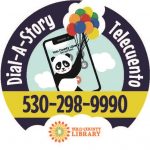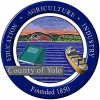Día de los Muertos
When it comes to Día de Los Muertos, some may carelessly assume it’s equivalent to a “Mexican Halloween”. However, cultural celebrations are an important element of understanding each other. This holiday is a good opportunity to help children understand, listen, and learn from those who honor this important holiday to keep their culture alive.
Here’s my family’s Día de los Muertos altar:

Belize, Costa Rica, and Guatemala are just a few of the countries that hold Day of the Dead rituals though the roots of the holiday are found all throughout Mexico. From the Nahua peoples who celebrated Miccahuitontli or “fiesta for the dead” to the Purepechas in the Meseta Tarasca, Día de los Muertos has been celebrated by more than 40 indigenous tribes long before Mexico was colonized by the Spanish. Generally, these indigenous celebrations for the dead take place in the last days of October and the first three days in November.
In pre-Hispanic times, Día de los Muertos was not only a day to celebrate the ancestors, it was also a day to thank the Gods for the annual harvest. During the harsh Spanish rule however, indigenous peoples were forced to hide their way of life and assimilate to the Spanish culture. This led to significant changes in the way Miccahuitontli was celebrated. The name of the festival, for example, was changed to be more acceptable to Nueva España and became “Día de los Santos”.
The Spanish influence over Día de los Muertos lasted long after the Mexican Independence until the Mexican Revolution. This was particularly so when José Guadalupe Posada created and popularized his Calaveritas, or political cartoons, which heavily criticized corrupt politicians. The influence of Posada’s famed “Catrina” and other key revolutionary figures in their skeletal form like Emiliano Zapata and Pancho Villa played a crucial role in favor of the Mexican Revolution.
Today, the Catrina and the Día de los Muertos customs play an important role in protests against corruption. They have been adopted by Chicanx and Latinx folk living in the United States in an effort to reclaim their indigeneity.
Here are some books about Día de los Muertos:
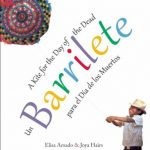
Un Barrilete : Para el Dia de los Muertos por Elisa Amado
A story about a boy in Guatemala honoring his recently dead Grandfather by building a huge kite with the help of his friends.
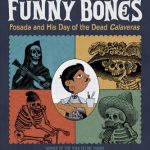
Funny Bones by Duncan Totinatiuh
Ani informational book about the role Day of the Dead played in Mexican History, particularly through the emblematic Catrina and other skeleton drawings created by the Mexican political cartoonist Jose Guadalupe Posada. Though this book is nonfiction, it’s a great opportunity for little ones to learn the history through condensed language and the pictures.
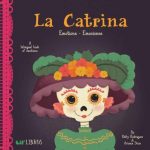
La Catrina : emotions = emociones / by Patty Rodriguez & Ariana Stein
A Lil’ Libros Book of Emotions. Inspired by one of the most recognized symbols of Día de los Muertos (Day of the Dead), this book introduces little ones to emotional expressions and their first English and Spanish words–and teaches them to recognize feelings like emocionado (excited), triste (sad), and confiado (confident).
Opportunities to observe Día de los Muertos locally:
Día de los Muertos: Sugar Skulls
Join us on zoom for a fun evening to honor our ancestors with music, Día de los Muertos history, and skull decorating! Pick up your Dia de los Muertos kit at the Davis, Esparto, or Winters libraries from October 27th through November 1st!
Día de los Muertos 2021: Espíritus Creativos de California
Visit this fun and colorful Día de los Muertos exhibition held by the California Museum in Sacramento from October 2- November 7.
Resources used in this blog:
Beyond Sugar Skulls: The History and Culture of Dia de los Muertos
Great article talks about how Día de los Muertos started out with indigenous roots and now Latinx people in the US are using the holiday to reclaim their roots.
Celebración del Día de Muertos
This article delves into the symbolism of a typical Día de los Muertos altar and the importance of each piece placed upon it. It is compiled by Mexican historians for the Mexican Government. Translation in English is available.
La Festividad Indigena Dedicada a los Muertos en Mexico
thorough look into the roots and history of Día de los Muertos compiled by Mexican historians for the Mexican Government. Translation in English is available.
TAGS: Día de los Muertos, History, Emotions

